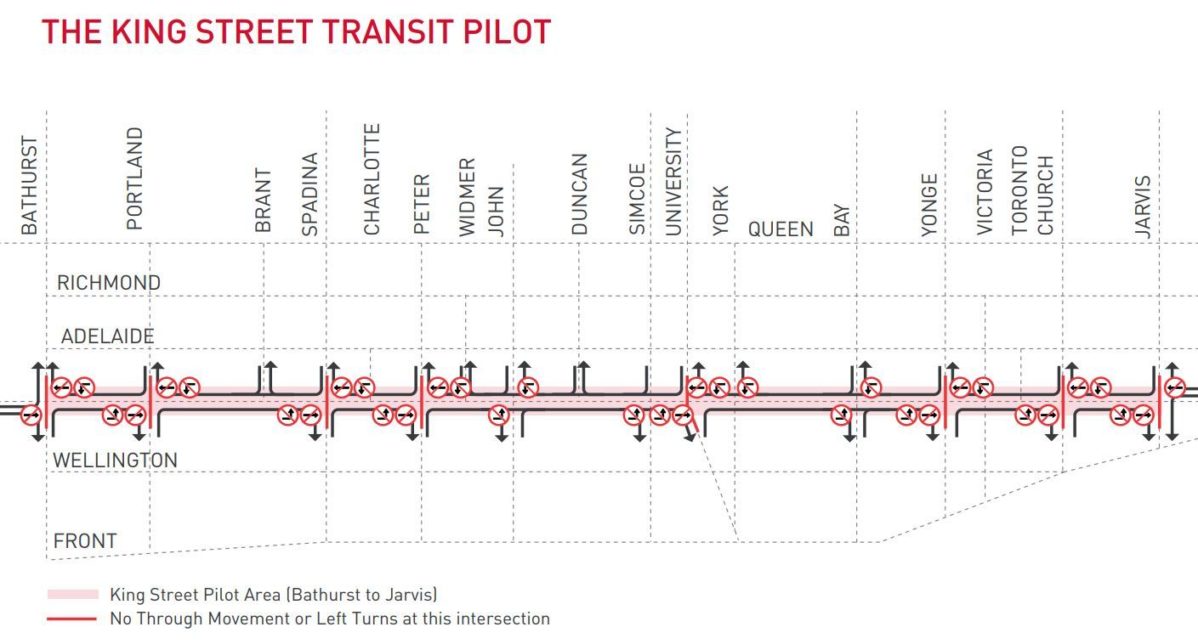Trial run of new traffic system will prioritize streetcars to improve travel times
King street is the busiest surface transit route in Toronto, according to a study conducted by the city. The street is used every day by around 20,000 vehicles and 60,000 streetcar riders, plus cyclists and pedestrians. All this traffic has been causing a state of near gridlock, which is why the King Street Pilot project is trying to solve this problem.
City Councillor Joe Cressey wrote on twitter “King st is broken. We’re redesigning it to work again. There will be kinks to work out. But, the broken status quo is not an option.”
The pilot involves new rules between Bathurst and Jarvis street. Streetcars are running in the centre, with stops in the far side of each intersection, and there’s no longer on-street parking. Starting last Sunday, Nov. 12, regular vehicles are not allowed to drive through the intersections, they must turn left or right.
There are now special areas for cyclists, taxis and passenger pick ups. A detailed explanation of these changes can be found on the official website of the King street pilot.
Right now, the main challenge is to inform people, “People need some time to learn new behaviors or change their driving pattern. Over time we expect these things to work themselves out and we also expect to see an increase in transit ridership.” wrote Jacquelyn Hayward Gulati, acting director, transportation infrastructure management at City of Toronto.
“This is brand new and it’s taking drivers in particular a little while to get used to the new scenario, just as I think it would take time for people who ride the streetcar to realize how fast it is,” said Joe Cressy, City Councillor for Ward 20 Trinity-Spadina.
According to Cressy, the pilot is already showing positive results. “We are seeing that it’s moving streetcar riders faster and more reliably, so that’s a success. There are certainly kinks to work out but that’s the case with any pilot and there’s a period of behavioral change and improvements to make, but so far the overall objective is working.”
If the system works properly, students at George Brown College should experience the benefits.
“Students travelling to the George Brown campus from the west should see their commute time on the King streetcar reduced over the next few weeks and months,” wrote Hayward.
“Until we put the pilot in place it was often faster to walk than to take the streetcar, and with this it’s going to put people in transit first and it’s gonna make it better for students,” said Cressy.
The pilot will last one year and its performance will be measured using three metrics: reliability, ridership and travel times. The first report on the results should be out in late 2018.


